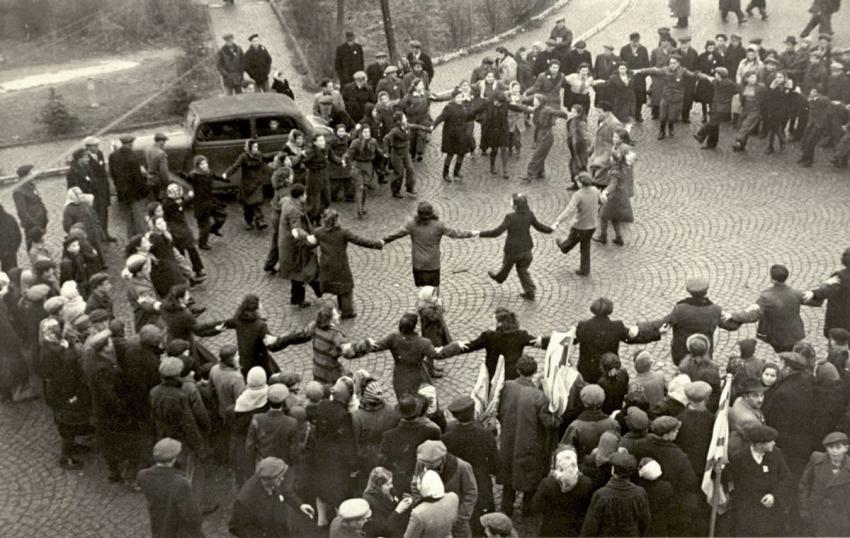A school was established in the DP camp in Hasenhecke where dozens of children and teenagers studied. In addition, a synagogue was opened in the camp, in which the displaced Jews began once again to celebrate the Jewish holidays, and where they held many memorial ceremonies, both for individuals and their original communities, as well as weddings. Concerts occasionally took place in the camp, as well as other cultural activities.
Agents of the Joint Distribution Committee came to Hasenhecke, where they established connections with the Jews in the camp, provided encouragement and arranged cultural activities for them.
However, not all of the survivors who arrived in Hasenhecke have positive memories of the camp. Lela (Klara) Weintraub-Fishman relates to daily life in the DP camp:
“Our first glimpse of the camp was almost enough to make us turn the truck around and drive back to Poland. Barbed-wire fences enclosed the camp, and there were guard towers with searchlights overlooking the compound within. Inside were dozens of long buildings made of wood with corrugated metal roofs. The place reminded us of the Janowska Camp, and we all feared that it would be put to a similar use. We were filled with dismay and alarm. It seemed that the whole thing was starting all over again: the Americans had replaced the Germans but the victims, Jews, remained the same. I thought, what the hell are we doing here in this prison? We’re free, aren’t we? We’ve been liberated, haven’t we?”
“Life in Hasenhecke was not physically hard, nor was it dangerous. Even so, I was miserable there. The worst part about it was the boredom. There wasn’t anything to do except stand in endless lines for our food rations. We stood in line, we got our food, and we went back to our rooms to eat. That was the sum of a normal day’s activity.”
("Lala’s Story: A Memoir of the Holocaust", pp. 305, 307)
In the camp Lala met Rabbi Morris Fishman, who was put in charge of Hasenhecke by the Joint, and they married. The DP camp at Hasenhecke remained open until the beginning of the 1950s. The majority of survivors who left the camp immigrated either to America or Israel.
Yad Vashem Photo Archives 1486/302







